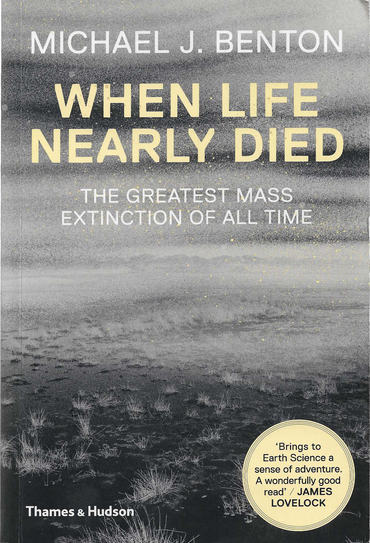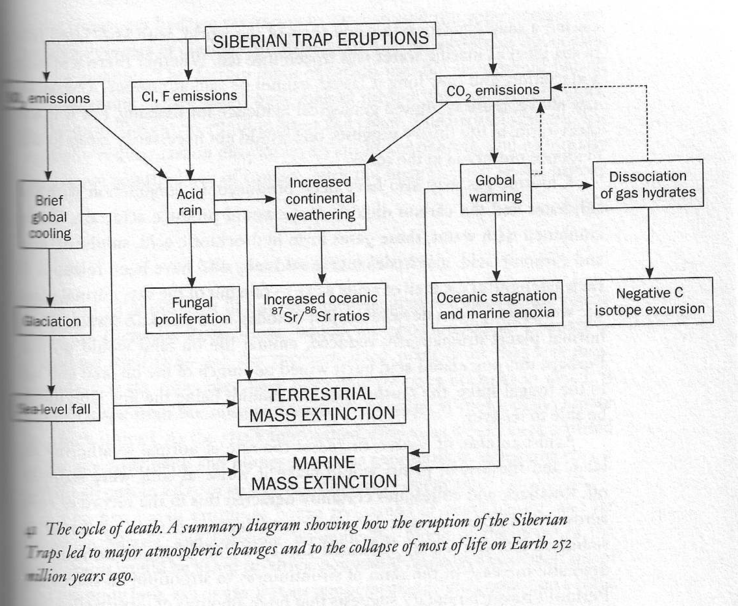When Life Almost Died
An interesting popular geology and paleontology book. Long, but it has a lot of great ideas, I recommend reading it.

Only a small part of the book is devoted to the actual Permian extinction, because the idea of such a dramatic extinction is fairly new. Benton spends a lot of the book edging up to the concept of mass extinctions.
In no particular order, the interesting things in the book:
- History of geology, particularly how periods/epochs/etc came to be known. “Carboniferous” is “coal bearing” in french.
- Extinctions are smeared “early” because latest fossil is rarely the actual extinction
- How scientists recognized impact structures.
- How we know we found almost all fossilized species.
- Interplay between paleontology and phylogeny. Benton wrote this book before a lot of genome sequencing had been done, though.
- How geologists pick a place to mark the beginning of geologic time periods.
- Why the Cretaceous-Paleogene extinction asteroid impact is a big deal, and how multiple lines of evidence point to it.
- How we know the end-Permian extinction is The Big One
The only flaw: I wish it had more illustrations and graphics. This is the work of dumbass copyright laws. Authors are apparently required to indemnify publishers about possible copyright violations, which makes authors scared to include otherwise interesting and relevant graphics. The graphics this book does have are great.

Above is an interesting graphic, one of only a few in the book, showing how a large volcanic eruption has cascading effects that end up in land and sea extinctions.
Palaeocast episode 64 features the author of When Life Almost Died, Michael Benton, talking about the end-Permian extinction. It’s well worth a listen, right up there with their Plesiosaur episode.
When Life Almost Died is copyright 2003. Since then some significant, and really interesting work has been done:
Catastrophic dispersion of coal fly ash into oceans during the latest Permian extinction shows some evidence that the Siberian Traps volcanism that ended the Permian probably burned up a large coal field. This injected lots of mercury into the biosphere, which is just awful for everything.
Benoit Beauchamp, one of the authors of the coal fly ash paper, gave a lively talk at the Royal Tyrell Museum which covers the geologic evidence of a mass extinction and the evidence of mercury and other effects of the Siberian Traps volcanism.
And then there’s The end-Permian mass extinction: a still unexplained catastrophe Shu-zhong Shen and Samuel A. Bowring. It wouldn’t be science without the automatic gainsaying of any hypothesis. This paper does claim a very narrow time span for the extinction event, 31 ± 31 thousand years.
